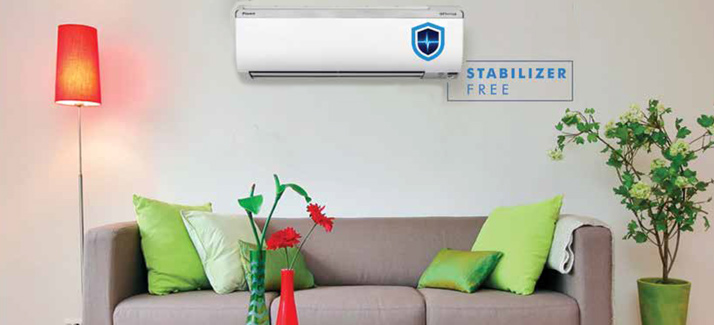
While shopping for air-conditioners, we are often faced with a decision between whether to get an inverter AC or a non-inverter one. The two types of technologies might sound like they don’t make much of a difference, however, the two variants are very distinct in terms of how much utility bills they generate, their cooling efficiency, the energy consumed etc. Here is a quick guide for you to make your next air-conditioner purchase hassle-free. From the kind of AC you should go for, to the difference between an inverter and non-inverter air-conditioner--this guide would be answering all your questions.
Window or split
While both these variants are evenly matched when it comes to effectiveness, window ACs reduce the light and heat coming into the room as the window gets covered with the AC body. When it comes to cooling efficiency, window ACs are at par with their split counterparts; moreover, inverter window ACs also save a lot of energy. Coming to the split air conditioners now, one advantage that they have over window ACs is that the compressor of the split air conditioners is placed outside and quite far away from the space to be air conditioned because of which split ACs produce almost no or negligible noise. Along with their quiet operation, split ACs are often chosen by consumers to add to the aesthetics of their home spaces as the bulk of the unit is outside the room.
Additionally, between a 1.5-ton split AC and a window AC of the same tonnage and star rating, the window AC would be much cheaper as compared to its split counterpart. Thus, window ACs are often budget-friendly, however, if you are someone who puts more importance on the interior aesthetics and factors like quiet operation, then split ACs would suit well to your needs. Daikin’s GTKJ series runs quieter, cools faster and saves bigger and has been engineered keeping in mind the modern users’ lifestyle needs.
Inverter or Non-Inverter
Modern homes require air conditioners that not only add to the home’s interior design but also decreases the users’ utility bills. Considering these things, an inverter AC becomes the most in demand choice across the best air conditioner brands in the market. As the name suggests, the air conditioner certainly works on the inverter technology, that is, its compressor functions on a variable speed in order to control the temperature of the room. In contrast to an inverter split AC, the compressor of a non-inverter AC turns ON or OFF as per the desired temperature. While, inverter ACs are certainly eco-friendly, however, when it comes to costs, inverter ACs cost slightly higher than their non-inverter counterparts. In the long run though, an inverter AC is going to save you a lot of money in utility bills. Thus, a 1-ton window or split AC in the inverter category would be a better long-term investment than its non-inverter variant. Daikin’s GTHT Dual-Comfort series provides a 2-in-1 functionality of cooling as well as heating and would save you from the vagaries of fluctuating temperatures all year round.
Ideal star-rating
Star rating of AC essentially refers to how efficient the air conditioner is in converting electricity to cool air. It is based on the Energy Efficiency Ratio (EER) for cooling. In case of inverter ACs, when they work at a slower speed, the tonnage rating of the inverter AC goes down and when it speeds up, the tonnage rating of the inverter AC goes up. Because of this, the running cost of an inverter AC is very less, making them the cheapest to run in India. Daikin’s GTKL Series is designed in such a way so as to deliver a comfortable living environment for longer periods of time. It offers superior performance, energy-efficiency, and comfort in stylish solutions conforming to all interior spaces and lifestyles.

